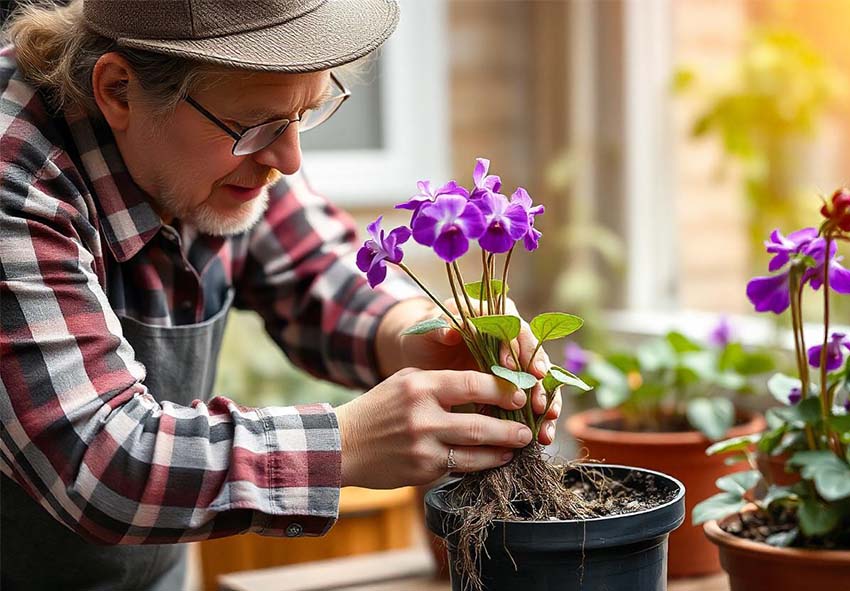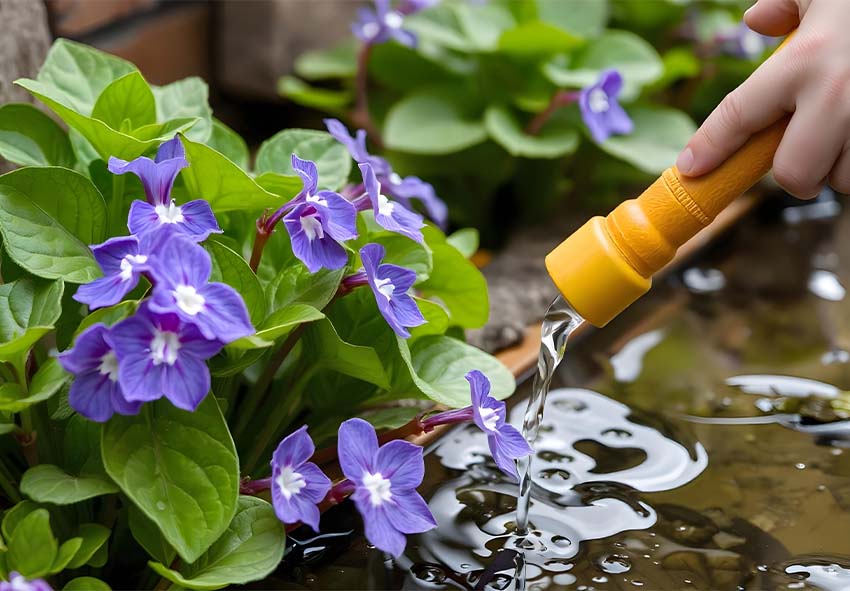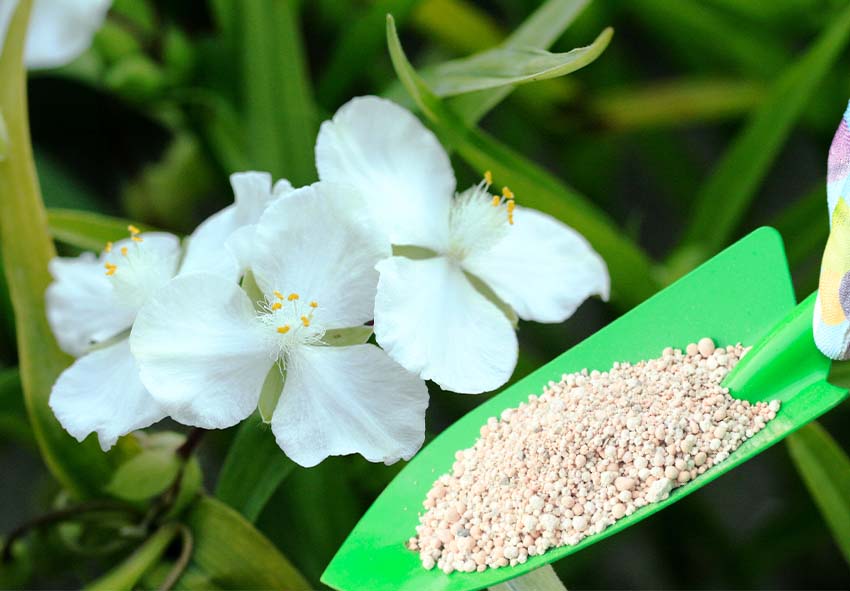Tradescantia, commonly known as Spiderwort, is a popular houseplant known for its vibrant foliage and easy care. With its trailing vines and colorful leaves, Tradescantia adds a touch of nature’s beauty to any space. Whether you’re new to gardening or a seasoned plant enthusiast, providing the right care immediately after planting is crucial for ensuring your Tradescantia thrives. Our gardening blog is a perfect place to find all the information you need!
Immediate Care After Planting Tradescantia

For long-term success with Tradescantia, it’s important to adjust your care routine to suit the changing seasons and consider propagation to expand your collection. With proper seasonal adjustments and care, your Tradescantia will continue to thrive for years to come.
Watering Tradescantia After Planting
Watering is critical after planting your Tradescantia. Ensure the soil is evenly moist but not waterlogged. Typically, you should water the plant thoroughly once, allowing excess water to drain away. Afterward, water when the top inch of soil feels dry. Watch for signs of overwatering, like yellowing leaves, and underwatering, such as wilting, to adjust your watering routine accordingly.
Light Requirements for Tradescantia
Here are some light requirements for newly planted tradescantia you may need:
- Bright, Indirect Light: Tradescantia thrives in bright, indirect light. Place your newly planted Tradescantia near a window with filtered sunlight to encourage healthy growth.
- Avoid Direct Sunlight: Direct sunlight can scorch the leaves, especially in the afternoon. Protect your Tradescantia by providing some shade or using a sheer curtain to diffuse the light.
- Adapt to Indoor Conditions: If moving your Tradescantia indoors, gradually adjust its exposure to indoor light levels to prevent shock and stress.
Soil and Drainage Considerations
Well-draining soil is essential for Tradescantia, as it prevents root rot caused by waterlogged conditions. If the soil in your pot or garden bed retains too much moisture, consider amending it with perlite or sand to improve drainage. This simple adjustment can make a significant difference in the health and longevity of your plant.
Acclimating Tradescantia to Its New Environment
Acclimating Tradescantia to its new home involves managing temperature and humidity levels. Keep the plant in a stable environment with temperatures between 65-75°F and moderate humidity. Avoid drastic changes in these conditions, as Tradescantia can be sensitive to sudden shifts, leading to stress. Gradually introduce the plant to its new surroundings to ease the transition.
Ongoing Tradescantia Care Tips

Once your Tradescantia is established, ongoing care is essential to maintain its health and vibrant appearance. Regular watering, fertilizing, and pruning are key to keeping your plant flourishing throughout the seasons.
Regular Watering Schedule
Establishing a regular watering schedule is key to maintaining a healthy Tradescantia:
- Establish a Consistent Routine: Water your Tradescantia regularly, keeping the soil consistently moist but not waterlogged. Typically, watering once a week works well, but this can vary based on your specific environment.
- Adjust for Seasonality: During the growing season (spring and summer), Tradescantia may require more frequent watering due to higher temperatures and increased growth. In fall and winter, reduce the frequency as the plant’s growth slows.
- Use Room Temperature Water: Always use room temperature water to avoid shocking the roots. Cold water can stress the plant, especially during cooler months.
- Water Evenly Around the Base: Ensure the water reaches all parts of the soil evenly, not just one spot. This promotes even root growth and prevents dry patches.
- Avoid Watering the Leaves: When watering, aim directly at the soil to avoid wetting the leaves. Consistently wet leaves can lead to fungal issues and rot.
- Observe Plant Signals: Watch for signs of overwatering, such as yellowing leaves, or underwatering, like wilting or dry leaf tips. Adjust your watering routine accordingly.
- Consider Environmental Factors: In more humid environments, you may need to water less frequently, while in dry climates or with indoor heating, more frequent watering might be necessary.
Fertilizing Tradescantia
Fertilizing your Tradescantia helps it grow strong and healthy. Use a balanced, water-soluble fertilizer every 4-6 weeks during the growing season (spring and summer). Dilute the fertilizer to half strength to avoid overfeeding, which can lead to salt buildup in the soil and damage the plant’s roots.
Pruning and Maintenance
Pruning is important for Tradescantia to maintain its shape and encourage bushier growth. Trim back any leggy stems or overgrown areas to promote a fuller appearance. Regular pruning also helps prevent the plant from becoming too unruly and encourages new growth, keeping your Tradescantia looking its best.
Long-Term Care for a Healthy Tradescantia

For long-term success with Tradescantia, it’s important to adjust your care routine to suit the changing seasons and consider propagation to expand your collection. With proper seasonal adjustments and care, your Tradescantia will continue to thrive for years to come.
Seasonal Care Tips
Caring for Tradescantia throughout the year requires some adjustments to ensure the plant thrives in each season. By tailoring your care routine to the specific needs of the plant during spring, summer, fall, and winter, you can help your Tradescantia stay healthy, vibrant, and resilient. Below are key seasonal care tips to guide you through the year.
Spring:
- Increase watering frequency as the weather warms up and the plant enters its active growing season.
- Begin a regular fertilization schedule with a balanced, water-soluble fertilizer every 4-6 weeks.
- Prune any leggy or overgrown stems to encourage fuller growth and remove any winter damage.
Summer:
- Ensure the plant receives adequate light, but protect it from intense, direct afternoon sun to prevent leaf scorching.
- Increase humidity around the plant by misting regularly, especially in dry or air-conditioned environments.
- Monitor for pests like spider mites or aphids, which can become more active in warm weather, and treat promptly if found.
Fall:
- Gradually reduce watering as the plant’s growth slows down with cooler temperatures.
- Stop fertilizing in late fall to give the plant a rest period during the winter months.
- Check the plant for any pests or diseases before bringing it indoors (if it’s outside) to avoid infestations.
Winter:
- Reduce watering frequency, allowing the soil to dry out slightly between waterings, as the plant’s growth slows down.
- Place the plant in a bright location with indirect sunlight, as light levels tend to be lower during winter.
- Avoid placing the plant near cold drafts or heating vents to prevent stress from temperature fluctuations.
Propagating Tradescantia from Cuttings
Propagating Tradescantia from cuttings is a simple and rewarding process. Start by cutting a healthy stem just below a leaf node. Place the cutting in water or directly into moist soil. Keep the cutting in a warm, bright spot and maintain consistent moisture. Within a few weeks, roots should develop, and you can transplant the new plant. You can also find more tips for propagation by cuttings or by division in our comprehensive guide for Tradescantia.
Conclusion
Tradescantia is a delightful plant to grow, offering lush foliage and easy care. By following the steps outlined in this guide, you can ensure your Tradescantia thrives in its new environment. Whether you’re adding to your existing collection or starting fresh, these tips will help you enjoy the beauty of Tradescantia in your home. Explore our online plant store for more plant care resources and a wide selection of Tradescantia varieties to enhance your garden.
Frequently Asked Questions (FAQs) about Tradescantia Care After Planting
1. How often should I water my Tradescantia after planting?
How often should I water my Tradescantia after planting? After planting, water your Tradescantia thoroughly to help establish its roots. Generally, you should water it once the top inch of soil feels dry. Avoid overwatering, as this can lead to root rot. Adjust the frequency based on the season, watering more in spring and summer and less in fall and winter.
2. Can I purchase Dutch Tradescantia bulbs from your online store?
Yes, you can find a variety of Tradescantia bulbs available for purchase in our online store Dutch-bulbs.com. We offer a range of colors and varieties to suit your preferences. Our bulbs are carefully selected for quality, and we provide detailed planting and care instructions to help you successfully grow your Tradescantia flowers.
3. When should I start fertilizing my newly planted Tradescantia?
Wait about 4-6 weeks after planting before starting a regular fertilization routine. Use a balanced, water-soluble fertilizer diluted to half strength, and apply it every 4-6 weeks during the growing season (spring and summer). Fertilizing too soon after planting can stress the plant, so give it time to settle in first.
4. How can I prevent my Tradescantia from becoming leggy?
To prevent legginess, ensure your Tradescantia is getting enough bright, indirect light. Regular pruning also helps maintain a bushier appearance. Cut back any long or sparse stems, which will encourage new growth and fuller foliage. Rotating the plant every few weeks ensures even light exposure, promoting more uniform growth.
5. What should I do if my Tradescantia shows signs of stress after planting?
If your Tradescantia shows signs of stress, such as wilting, yellowing leaves, or stunted growth, first check the watering and light conditions. Ensure the plant isn’t overwatered or in direct sunlight. Adjusting the light exposure, improving soil drainage, or providing more humidity can often resolve these issues. Monitor the plant closely and adjust care as needed.
Published: 10.09.2024
